Recently, I got to play around with ASUS’ Zephyrus G14 notebook powered by AMD’s Renoir flagship, the Ryzen 9 4900H, and the RTX 2060 Max-Q. Since this is far too late for a standard review, I’ll try to do something different here. We’ll be focusing on the performance and CPU core clock scaling with the AC power and on battery. Furthermore, we’ll be checking out ASUS’ Armoury Crate performance Tuning tool which supposedly boosts performance and reduces power consumption, thereby extending the battery life.
We’ll first have a look at the PCMark and 3DMark performance as it’s a convenient tool to benchmark a laptop or an AIO system, followed by rendering, compression/decompression, and gaming benchmarks.
Before diving into the tests, let’s have a look at the specifications. We got the GA401IV variant which is decked out with the top-end hardware including the Ryzen 9 4900H, GeForce RTX 2060 Max-Q 6GB, 16GB of 3200MT/s memory, and a 1TB NVMe SSD. The display was a rather impressive 14″ FHD, 100% sRGB with a refresh rate of 120 Hz which is a good addition if you’re into FPS gaming.
System Performance on AC Power

As expected, in lightly threaded workloads (Essentials) like web-browsing, video conferencing, and app-start times, the Ice Lake-U flagship, the Core i7-1065G7 comes out on top.

With productivity tests, we’re looking at writing and spreadsheet performance which to be fair is less of a benchmark than a courtesy. This too is a single-threaded workload that benefits from frequency bursts rather than raw performance. As such, the three chips perform more or less the same, with the Dell XPS lagging behind for some reason.

Content creation includes rendering, photo and video editing. This is AMD’s own backyard leveraging as many threads as you throw at it. As such, the Ryzen 9 powered Zephyrus G14 wins here by a fat margin.

Finally, looking at the overall PCMark score, the Zephyrus leads by around 1,200 points. Some of you might express concern as to why we’re comparing a 35W CPU against 15W and 25W parts. The reasons are two-fold. Firstly, the Zephyrus is a 14″ notebook same as the Surface Book and Acer Swift 3. Granted, it may not be as light, but it features not only an eight-core/16 thread CPU but also a capable discrete graphics card which the other two lack. As such, I believe this comparison is justified. It’s not a comparison of the processors, rather a performance comparison of three 14″ portable notebooks on AC and battery.
System Performance: Battery
I tried using ASUS’ Armoury performance tuning app, but to be honest it’s nothing more than bloatware with a fancy UI. The turbo performance mode does improve performance marginally (by 5-6%), but it pushes the fans to 100%, making the laptop sound like a jet engine, so I’d recommend deleting it along with all the rubbish that comes factory installed with the laptop. Before you do that, be sure to avail a limited day trial of GamePass that comes free with it.

The “performance mode of the Armoury Crate is basically the high-performance option from the window power while the Turbo mood is a custom power profile that puts the fans at 100% at all times without any tangible benefit in terms of performance.
In our battery tests, we’ll be benchmarking the laptop using the power saver and high-performance presets from the power menu. Keep in mind that only the G14 was tested on battery. The rest of the scores for the other laptops are all under AC power.




Continued on the next page
Clock Scaling and Power on AC Power




With the AC power connected, the CPU runs at full-throttle in lightly threaded workloads such as web-browsing, writing, spreadsheet editing, constantly hitting the 4.4GHz boost clock. However, as more and more cores are loaded, the boost clock drops to the all-core/multi-core boost of 3.5GHz. This is evident in video conferencing and content creation. The CPU power consumption stays between 15-55W under low to moderate load and spikes up to 140W under heavy loads.
Clock Scaling and Power on Battery (Battery Saver Preset/Silent)




Using the silent (battery-saver) profile has a drastic impact on the CPU clock speeds and power consumption. The frequency mostly stays at 1.5GHz with brief spikes to 2.5GHz under heavy loads such as rendering. The power consumption here is quite impressive. The CPU draws just 5-10W of power with spikes to 15W under moderate load and a maximum of 45-50W with all cores loaded.
Clock Scaling and Power on Battery (Performance Preset)




Using the performance preset on the battery shakes things up a bit. The core clock is pushed by 1GHz to 2.5GHz with repeated drops to 1.5GHz. Under heavy load, the profile does allow the CPU to cross the 4GHz mark, albeit briefly. Here, the power draw stays at 10W under lightly threaded loads, with spikes to 35W under moderate load and as much as 70W under heavy load.
Continued on the next page
CPU Performance
With that out of the way, let’s check some individual CPU benchmarks under AC power and different battery profiles and see how they perform:




Clock Scaling: AC Power vs Battery
Cinebench R20



The results are pretty self-explanatory here. On direct AC power, one of the cores constantly runs at 4.3GHz while on battery (silent), it’s capped to 1.45GHz with a couple of spikes to 4.2GHz. The performance mode on battery performs very similarly to the AC power mode.



The multi-threaded benchmark is more interesting. On AC power, the multi-core boost stays between 3.7 to 4GHz. On silent mode using battery power, it drops to 2.7GHz while performance mode pushes it slightly higher to around 3GHz.
Speedometer



Speedometer is another benchmark that drastically changes as you shift from AC power to battery. The reason is that upon switching to battery mode (silent), all the cores are capped to 1.45GHz. Speedometer uses 2-3 cores at a time, and on AC power, two of them simultaneously peak at 4.35GHz whereas, in battery (perf) mode, they mostly stay in the 3 to 3.5GHz range with two very brief peaks to 4.35GHz.
Continued on the next page
Graphics and Gaming Performance
3DMark TimeSpy

The graphics scores plummet as soon as you switch to battery power. You go from all the way up to 33-37 FPS to 10-11 FPS. The CPU performance isn’t much affected though. Furthermore, going from silent to performance mode doesn’t affect the frame rates at all.
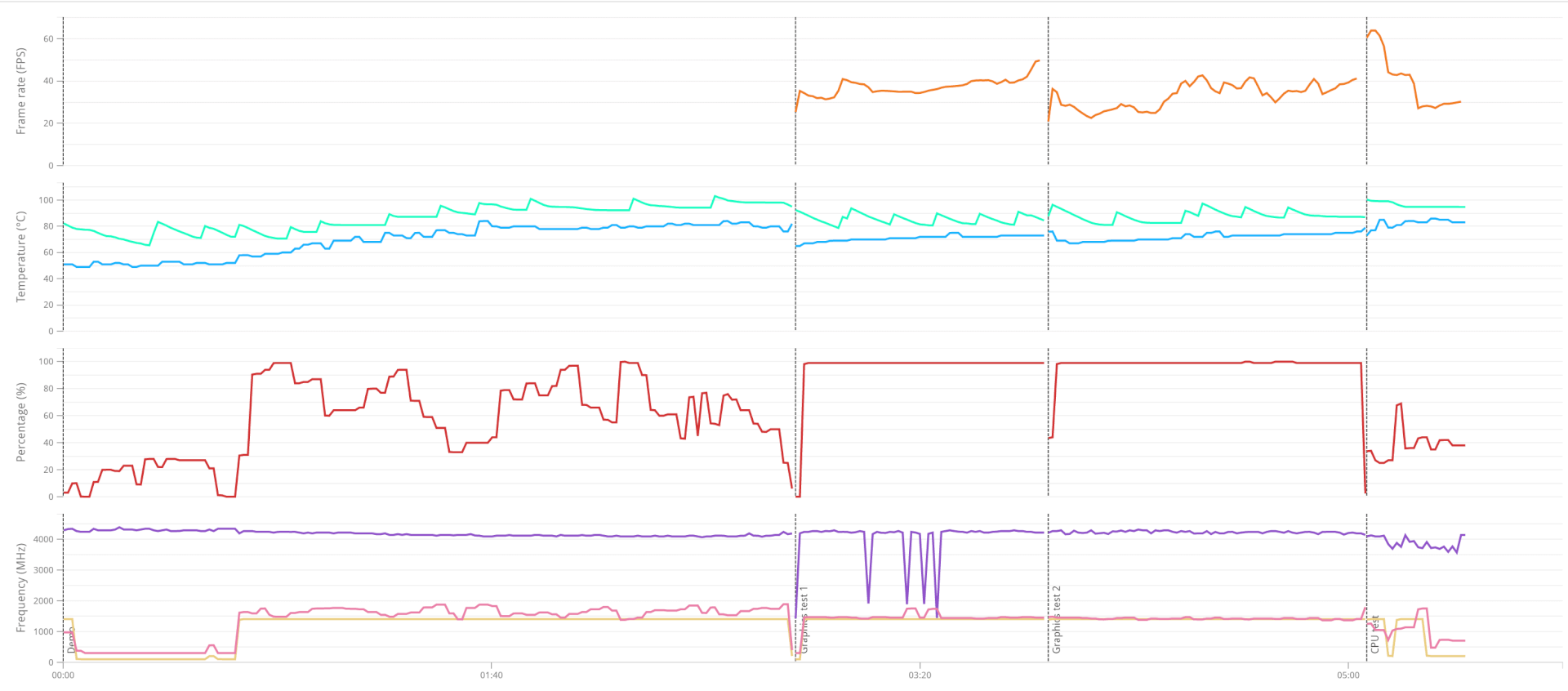
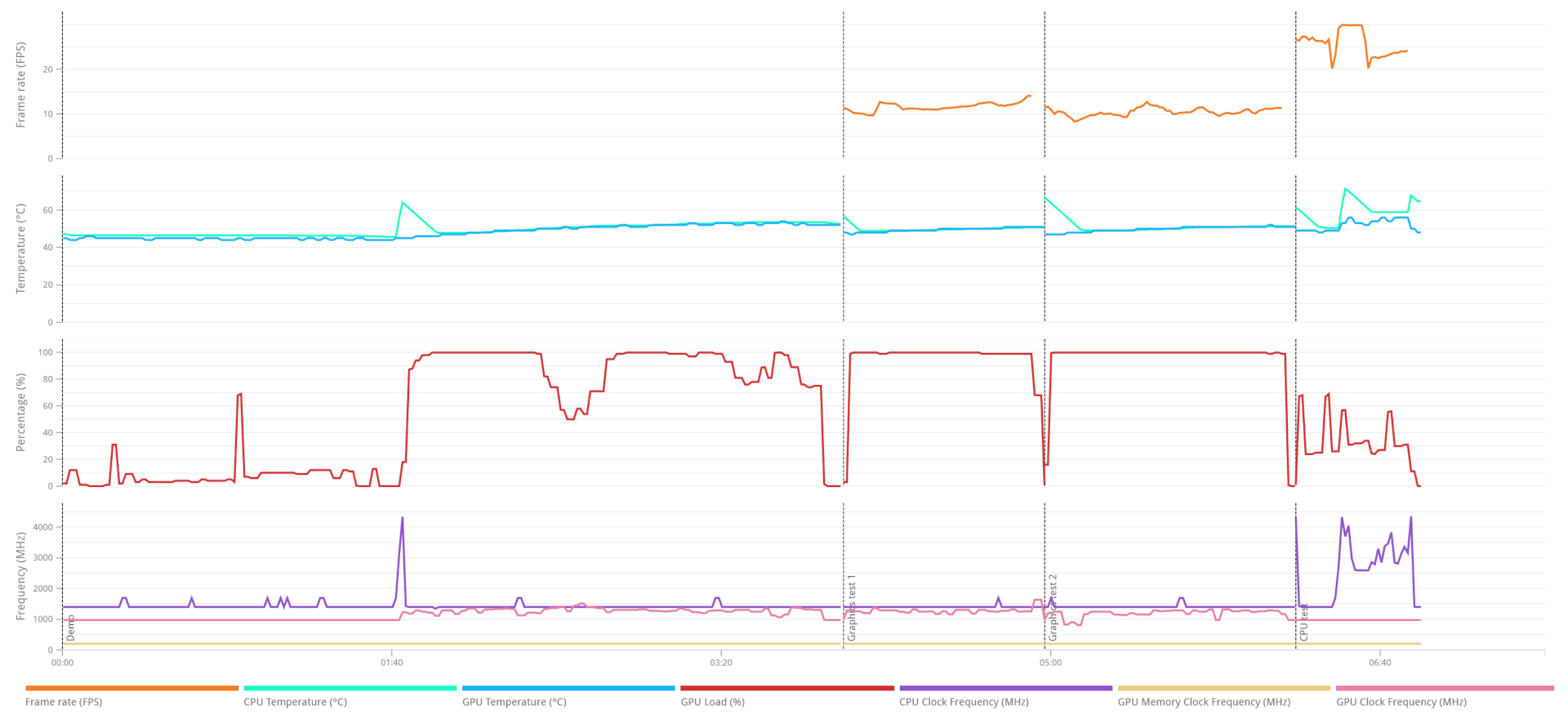
Here, you can see why the above results were produced. On AC power, the CPU runs at 4.3GHz constantly while the GPU core and memory clocks also run around 1.5GHz. Upon switching to battery (silent), the GPU core and memory clocks drop to 1GHz and 200MHz, respectively while the CPU frequency drops to 1.4GHz as seen in earlier tests.
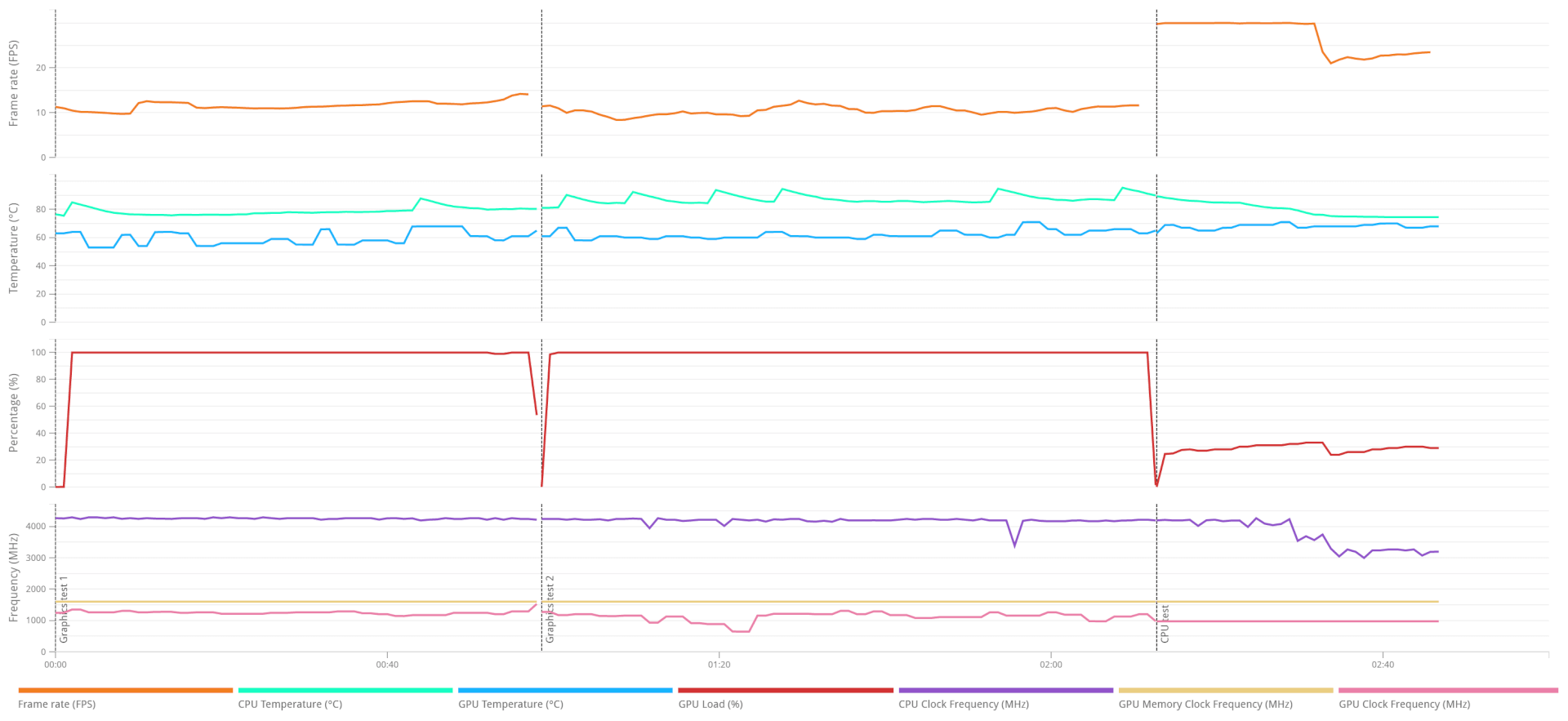
Switching to performance mode on the battery does push the GPU core clock to 1.2GHz and the memory to 1.5GHz, but strangely the frame rates are unaffected. Overall, the GPU core falls from 1.5GHz to 1GHz regardless of the performance preset on the battery. Keep in mind that this is the RTX 2060 Max-Q we’re talking about here.
3DMark FireStrike

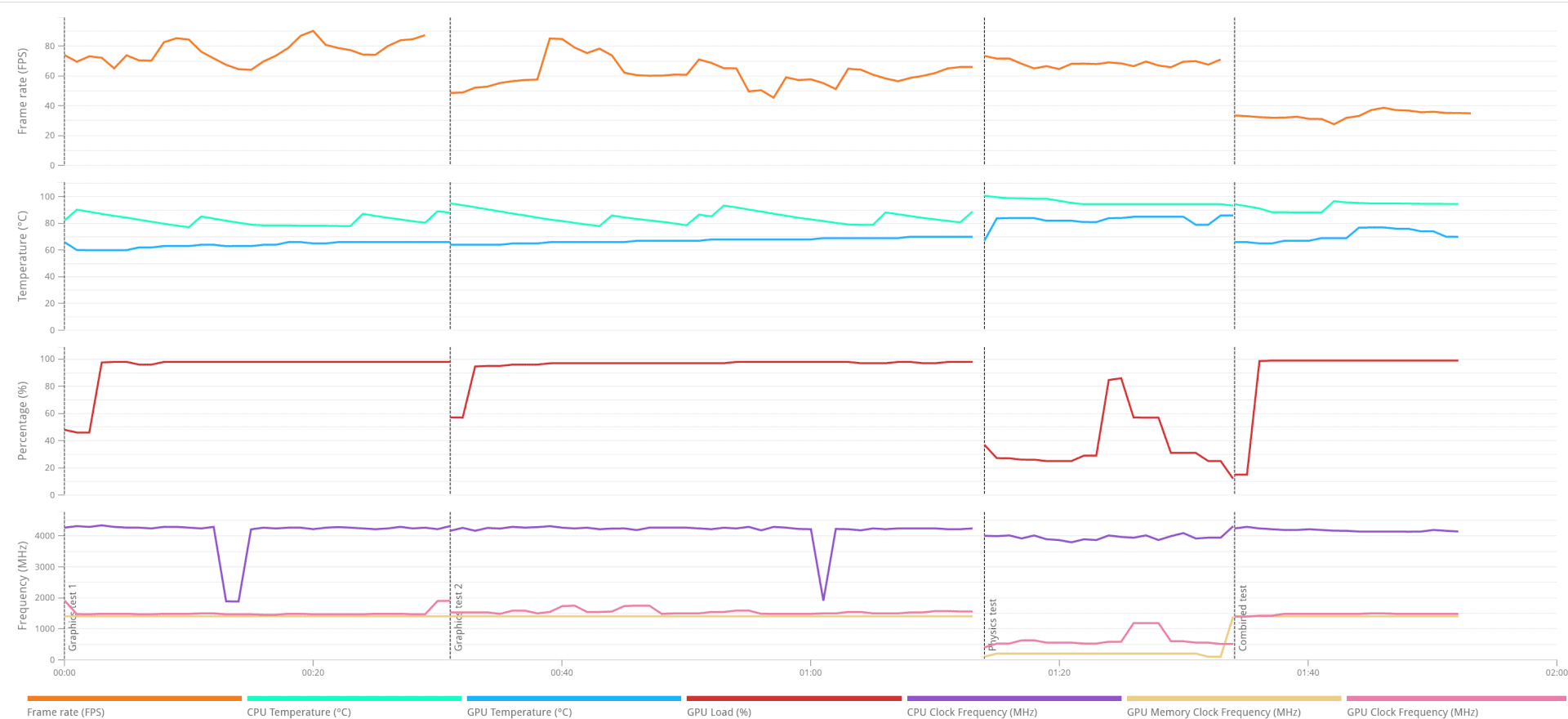
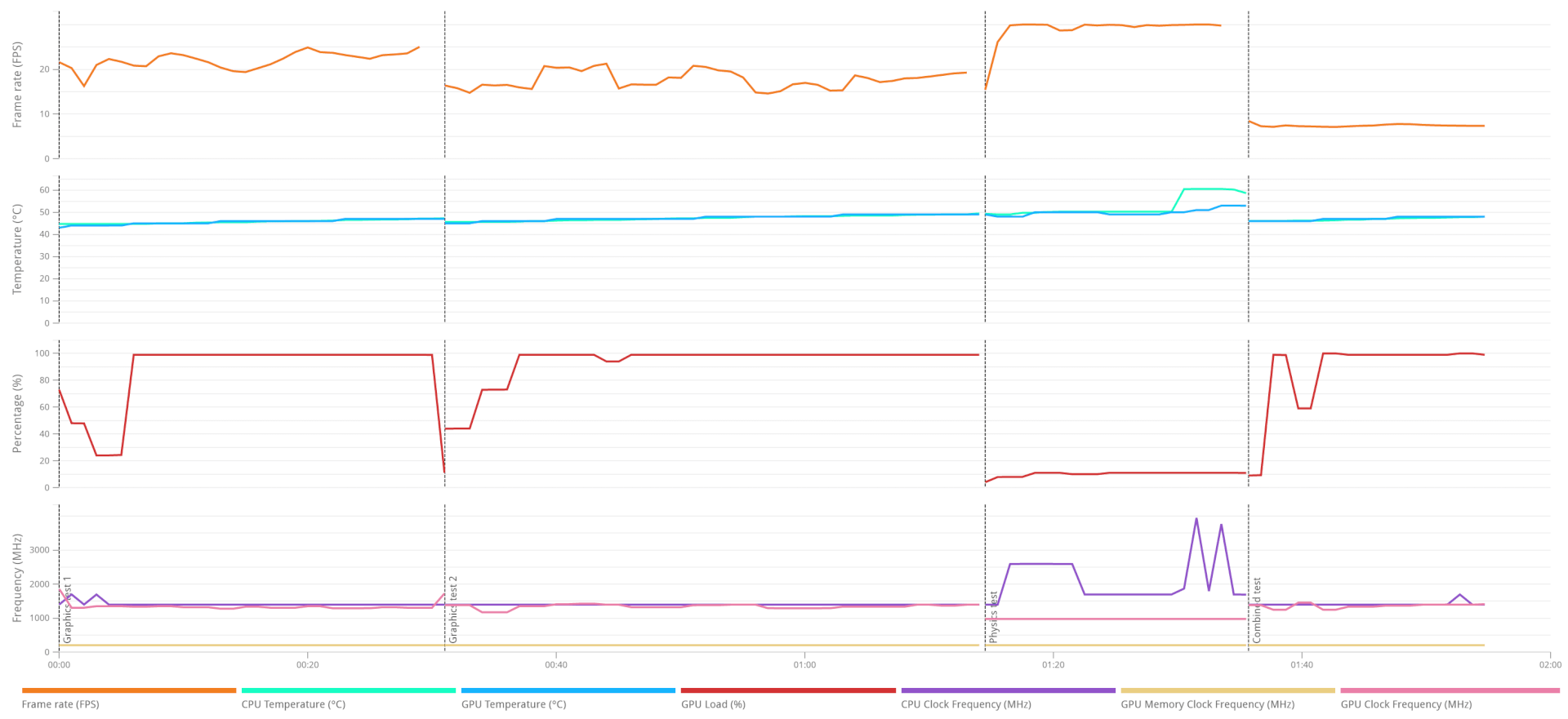
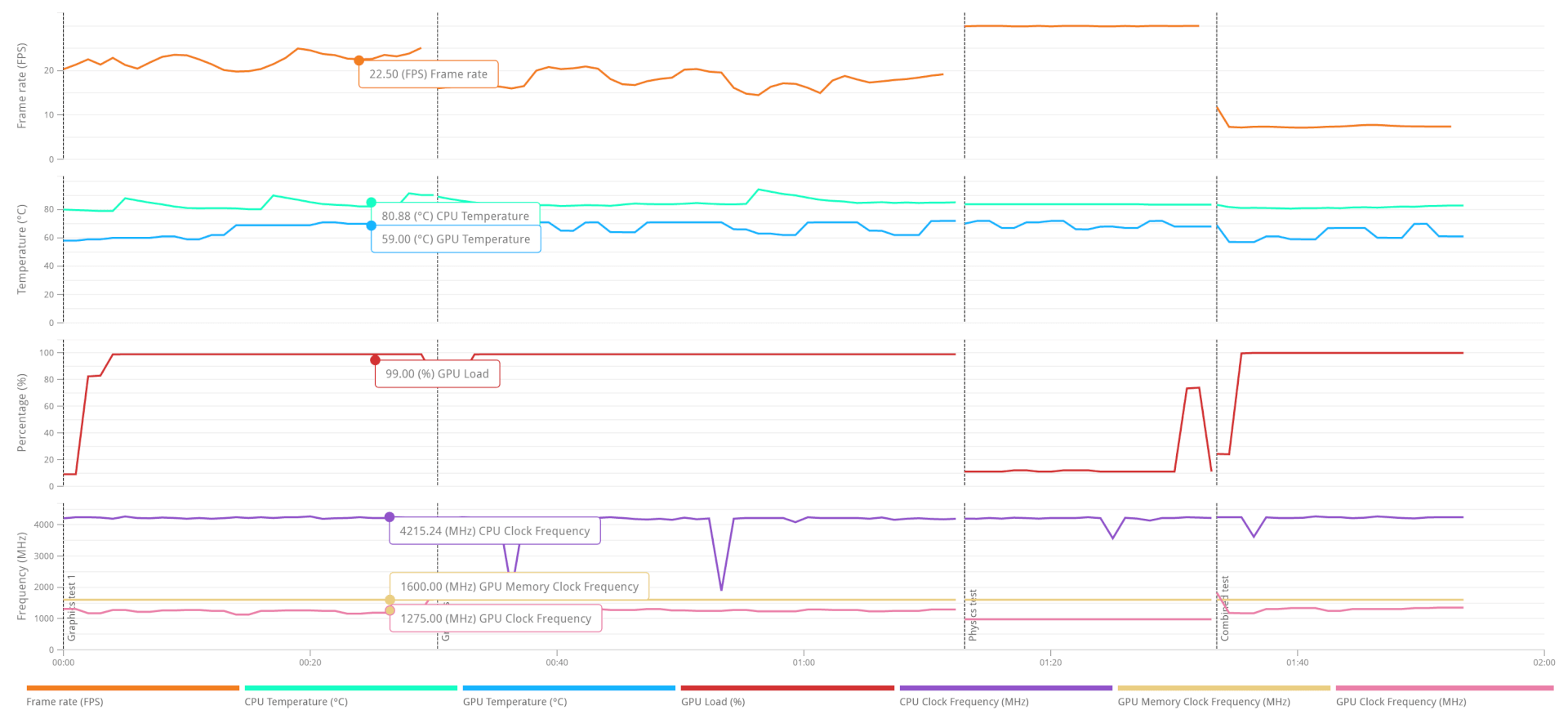
Firestrike shows identical performance trends with the GPU core clock dropping from 1600MHz under AC power to 1275MHz on battery (performance mode), with the scores once again dropping significantly on battery power.
Gaming Performance
The CPU and GPU behaved just like 3DMark in gaming workloads under power and battery. Ergo, games were unplayable on battery regardless of which preset you choose or profile you set the laptop to. Here are the benchmarks:

On battery, the frame rates dropped to 20 FPS in the best performing game (Deus Ex) with single-digit lows. The Division 2 and Assassins’ Creed also saw averages of around 15-18 FPS with similar lows.
Continued on the next page
Power Consumption and Conclusion
We also measure the power consumption at the outlet under different workloads to get an idea of how much juice the laptop needs as a whole:

Under CPU-heavy rendering workloads like Cinebench and V-Ray, the power draw crossed the 150W mark at the outlet while gaming was less demanding with an average of 130-140W. The idle power draw was just around 25W.
The ASUS Zephyrus G14 is a testament to how flexible AMD’s Renoir processors are. The CPU power draw can go as high as 150W on direct AC power, with an average of just around 5-10W under battery saver mode in lightly-threaded workloads.
The only concern here is the GPU performance under battery which makes gaming absolutely unplayable unless you’re connected to an AC source. I’m not sure whether this issue is localized to the G14 or present in all Renoir devices, but it has to do with the ACPI profile of the SoC.
ASUS Zephyrus G14 Review
Performance - 95%
Battery - 75%
Build and Aesthetics - 85%
Portability - 70%
Display - 65%
78%
Total Score
The ASUS Zephyrus G14 is a testament to how flexible AMD's Renoir processors really are. The CPU power draw can go as high as 150W on direct AC power, with an average of just around 5-10W under battery saver mode in lightly-threaded workloads.
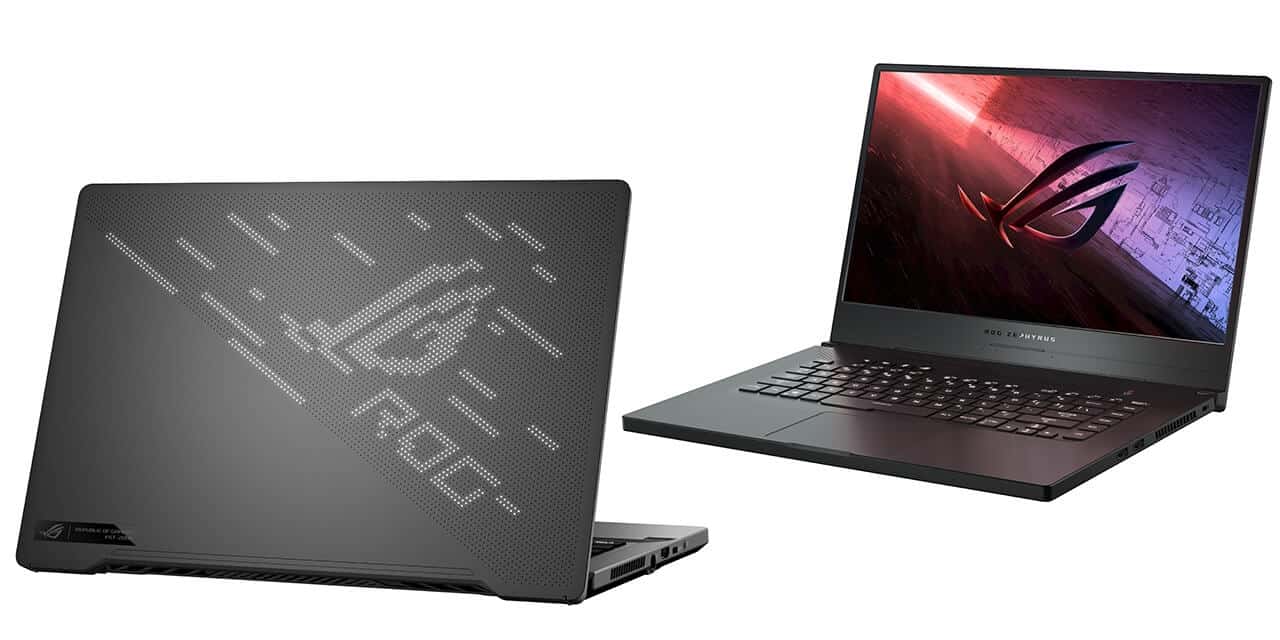
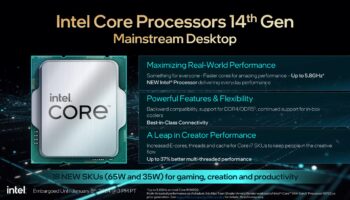 13th Gen i9-13900K is ~30% Slower at Intel Spec than Board Partner “Optimized” Power Limits
13th Gen i9-13900K is ~30% Slower at Intel Spec than Board Partner “Optimized” Power Limits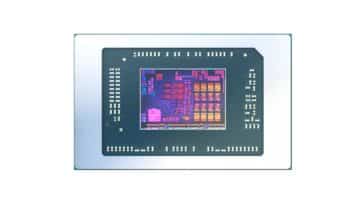 AMD Ryzen 9000 “Strix Point” CPU: Nearly As Fast as Intel’s Core Ultra “Meteor Lake” at 1.4 GHz
AMD Ryzen 9000 “Strix Point” CPU: Nearly As Fast as Intel’s Core Ultra “Meteor Lake” at 1.4 GHz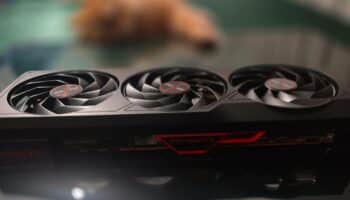 Sapphire Pulse Radeon RX 7900 GRE Review: AMD’s Best in Action
Sapphire Pulse Radeon RX 7900 GRE Review: AMD’s Best in Action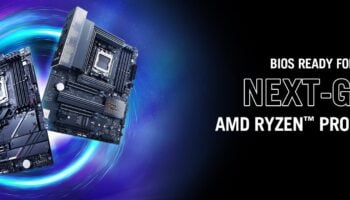 ASUS X670/B650/A620 Motherboards are Ready for AMD’s Ryzen 9000 “Zen 5” CPUs
ASUS X670/B650/A620 Motherboards are Ready for AMD’s Ryzen 9000 “Zen 5” CPUs